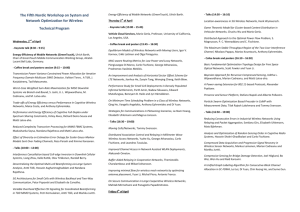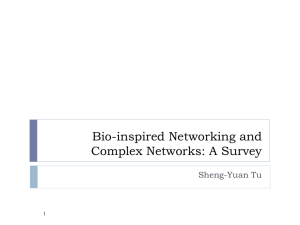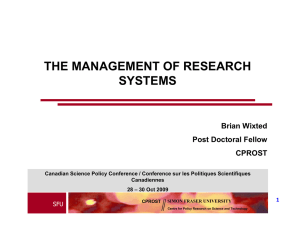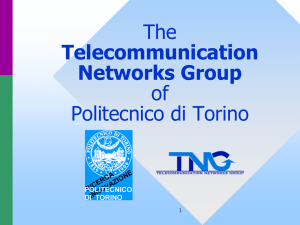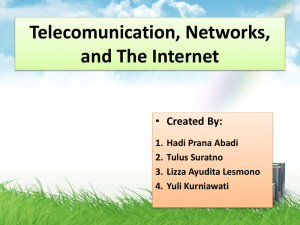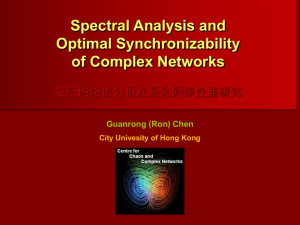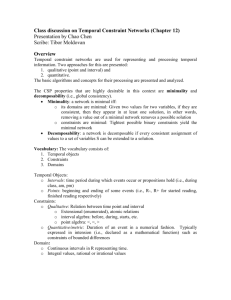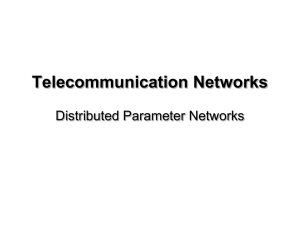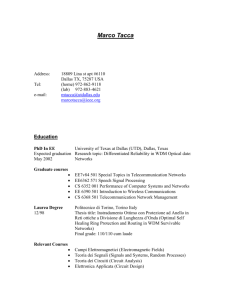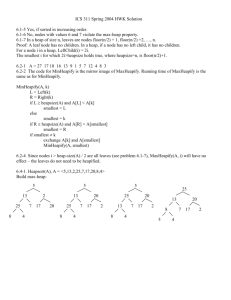pptx
advertisement
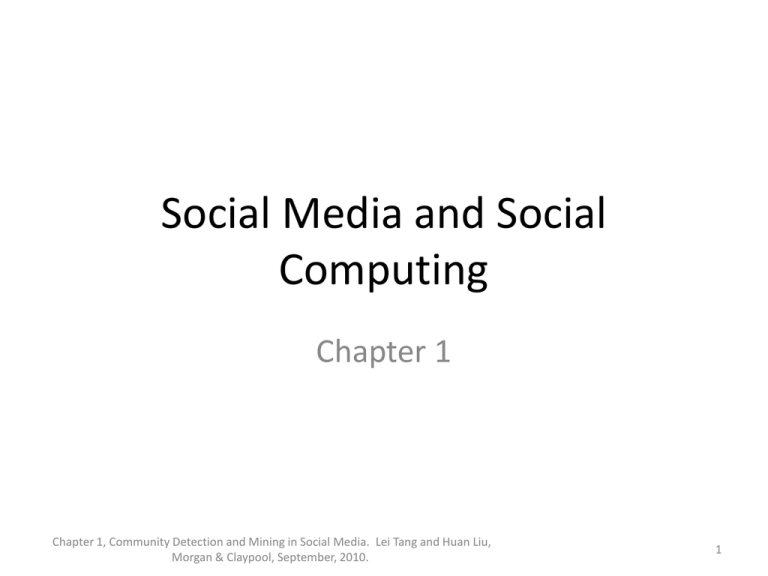
Social Media and Social
Computing
Chapter 1
Chapter 1, Community Detection and Mining in Social Media. Lei Tang and Huan Liu,
Morgan & Claypool, September, 2010.
1
Traditional Media
Broadcast Media: One-to-Many
Communication Media: One-to-One
2
Social Media: Many-to-Many
Social
Networking
Content
Sharing
Social
Media
Blogs
Microblogging
Wiki
Forum
3
Characteristics of Social Media
•
•
•
•
•
•
“Consumers” become “Producers”
Rich User Interaction
User-Generated Contents
Collaborative environment
Collective Wisdom
Long Tail
Broadcast Media
Filter, then Publish
Social Media
Publish, then Filter
5
Top 20 Websites at USA
1
2
3
Google.com
Facebook.com
Yahoo.com
11
12
13
Blogger.com
msn.com
Myspace.com
4
5
6
YouTube.com
Amazon.com
Wikipedia.org
14
15
16
Go.com
Bing.com
AOL.com
7
8
9
Craigslist.org
Twitter.com
Ebay.com
17
18
19
LinkedIn.com
CNN.com
Espn.go.com
10
Live.com
20
Wordpress.com
40% of websites are social media sites
6
7
8
Networks and Representation
Social Network: A social structure made of nodes (individuals or
organizations) and edges that connect nodes in various
relationships like friendship, kinship etc.
• Graph Representation
• Matrix Representation
9
Basic Concepts
•
•
•
•
•
•
•
•
A: the adjacency matrix
V: the set of nodes
E: the set of edges
vi: a node vi
e(vi, vj): an edge between node vi and vj
Ni: the neighborhood of node vi
di: the degree of node vi
geodesic: a shortest path between two nodes
– geodesic distance
10
Properties of Large-Scale Networks
• Networks in social media are typically huge, involving
millions of actors and connections.
• Large-scale networks in real world demonstrate
similar patterns
– Scale-free distributions
– Small-world effect
– Strong Community Structure
11
Scale-free Distributions
• Degree distribution in large-scale networks often
follows a power law.
• A.k.a. long tail distribution, scale-free distribution
12
log-log plot
• Power law distribution becomes a straight line
if plot in a log-log scale
Friendship Network in Flickr
Friendship Network in YouTube
13
Small-World Effect
• “Six Degrees of Separation”
• A famous experiment conducted by Travers and Milgram
(1969)
– Subjects were asked to send a chain letter to his acquaintance in order
to reach a target person
– The average path length is around 5.5
• Verified on a planetary-scale IM network of 180
million users (Leskovec and Horvitz 2008)
– The average path length is 6.6
14
Diameter
• Measures used to calibrate the small world effect
– Diameter: the longest shortest path in a network
– Average shortest path length
• The shortest path between two nodes is called
geodesic.
• The number of hops in the geodesic is the
geodesic distance.
• The geodesic distance between node 1 and
node 9 is 4.
• The diameter of the network is 5,
corresponding to the geodesic distance between
nodes 2 and 9.
15
Community Structure
• Community: People in a group interact with each
other more frequently than those outside the group
• Friends of a friend are likely to be friends as well
• Measured by clustering coefficient:
– density of connections among one’s friends
16
Clustering Coefficient
•
•
•
•
d6=4, N6= {4, 5, 7,8}
k6=4 as e(4,5), e(5,7), e(5,8), e(7,8)
C6 = 4/(4*3/2) = 2/3
Average clustering coefficient
C = (C1 + C2 + … + Cn)/n
• C = 0.61 for the left network
• In a random graph, the expected
coefficient is 14/(9*8/2) = 0.19.
17
Challenges
• Scalability
– Social networks are often in a scale of millions of nodes and connections
– Traditional Network Analysis often deals with at most hundreds of
subjects
• Heterogeneity
– Various types of entities and interactions are involved
• Evolution
– Timeliness is emphasized in social media
• Collective Intelligence
– How to utilize wisdom of crowds in forms of tags, wikis, reviews
• Evaluation
– Lack of ground truth, and complete information due to privacy
18
Social Computing Tasks
• Social Computing: a young and vibrant field
• Many new challenges
• Tasks
– Network Modeling
– Centrality Analysis and Influence Modeling
– Community Detection
– Classification and Recommendation
– Privacy, Spam and Security
19
Network Modeling
• Large Networks demonstrate statistical patterns:
– Small-world effect (e.g., 6 degrees of separation)
– Power-law distribution (a.k.a. scale-free distribution)
– Community structure (high clustering coefficient)
• Model the network dynamics
– Find a mechanism such that the statistical patterns observed in largescale networks can be reproduced.
– Examples: random graph, preferential attachment process, Watts and
Strogatz model
• Used for simulation to understand network properties
– Thomas Shelling’s famous simulation: What could cause the
segregation of white and black people
– Network robustness under attack
Comparing Network Models
observations over various
real-word large-scale networks
(Figures borrowed from “Emergence of Scaling in Random Networks”)
outcome of a
network model
Centrality Analysis and Influence Modeling
• Centrality Analysis:
– Identify the most important actors or edges
– Various criteria
• Influence modeling:
– How is information diffused?
– How does one influence each other?
• Related Problems
– Viral marketing: word-of-mouth effect
– Influence maximization
22
Community Detection
• A community is a set of nodes between which the interactions are
(relatively) frequent
– A.k.a., group, cluster, cohesive subgroups, modules
• Applications: Recommendation based communities, Network Compression,
Visualization of a huge network
• New lines of research in social media
– Community Detection in Heterogeneous Networks
– Community Evolution in Dynamic Networks
– Scalable Community Detection in Large-Scale Networks
23
Classification and Recommendation
• Common in social media applications
– Tag suggestion, Friend/Group Recommendation, Targeting
Link prediction
Network-Based Classification
24
Privacy, Spam and Security
• Privacy is a big concern in social media
– Facebook, Google buzz often appear in debates about
privacy
– NetFlix Prize Sequel cancelled due to privacy concern
– Simple annoymization does not necessarily protect privacy
• Spam blog (splog), spam comments, Fake identity, etc., all
requires new techniques
• As private information is involved, a secure and trustable
system is critical
• Need to achieve a balance between sharing and privacy
25
Book Available at
• Morgan & claypool Publishers
• Amazon
If you have any comments,
please feel free to contact:
• Lei Tang, Yahoo! Labs,
ltang@yahoo-inc.com
• Huan Liu, ASU
huanliu@asu.edu
